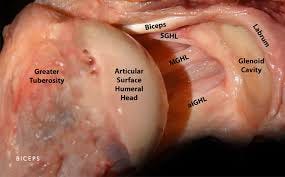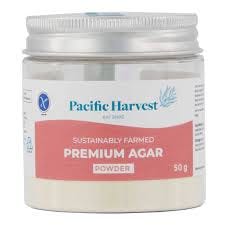Sometimes I’d rather just break a bone…
Well, anyway, when we have parts of our body that are soft tissue, muscles, ligaments, tendons and fascia damaged, it can be quite frustrating.
Most people know the first few, but fascia used to be a little less understood, mostly because in classification of the human body, anatomists would peel back the fascia, to get the “meaty” parts like muscles, and nerves and blood vessels as these were considered more important. These days, some people have made an entire career out of being known for fascial research, work, and study. I myself completed my masters looking into practical assessment of a part of the fascia related to lymphatics by health practitioners.
So I’ll briefly describe it here, fascia is like the white bits of the meat, the marble, it is sinew like, and extends itself around and permeates every muscle, ligament, tendon, nerve, artery and lymphatic vessel. In fact the fascia is a continuous net throughout the entire body, and also has been studied to reveal it contains in some areas the ability to contract, having some fibers like muscle within its structure. It’s also a significant pathway for migration of white blood cells in their traverse through the body, and in a mechanical sense is sometimes capable of retaining and rebounding significant force on the body eg the plantar fascia in a loaded high jump, or the interosseous membrane of the radius and ulnar in a fall on the outstretched hand (absorbing and sending the force onwards up the arm, assisting to prevent fractures or tears).
Recently, I found myself with a decent biceps long head tendon tear, and a supraspinatus myotendinous junction tear. And if I wasn’t educated, I most likely would’ve continued to snowboard and do dumb stuff, until my tendon snapped and the biceps muscle ended up rolled up in an elastic ball in my arm…sometimes life puts you where you need to be so you don’t hurt yourself further.
Luckily I do know I need to rest it. The biceps tendon runs through the humeral groove, a longitudinal valley in the top of the humerus shaft, and when you get tears in the tendon, or the ligament that holds the tendon into the valley, the tendon can get a lot more friction and can even slip out of its groove….not groovy, painful and leaves you looking like your about have a stroke as you try relocate the tendon whilst your arm spasms. The rotator cuff muscle Ill leave aside for another story …
Rest. Everything needs to rest, to allow the bodies intelligent memory kick in, to remember what the tissue was like before the injury, and soften and allow fresh blood into the injury site, initially platelets to clot and prevent ongoing bleeding from damaged area, inflammatory products which initially promote blood flow and stimulate the area to remove damaged cells. Then as things slowly regenerate, the torn areas lay out more sinew and muscle fibers, which do not necessarily correlate with the lines of force we previously held through the body, kind of like a haphazard squiggle of spaghetti on a plate. These spaghetti areas, sometimes called fibrosis or scar tissue, can serve a purpose to enable a weak area to remain tensile strong by containing large amounts of strong collagen based tissue. The weakness here arises from its lack of integration into the wider muscle, tendon or ligament areas in terms of regular function. Like a suspension bridge built with a twist and a turn, it no longer accommodates the usual
force of “traffic” across its structure in the same way, redistributing the force differently. So if we load up the muscle in the same way as before with a high weight….bang, boom, pop, it’ll give out and we’ve got greater tears….
Luckily, even bone gradually responds to the force e we put through it. I remember when I did martial arts, my friend whose family ran the dojo, had been kicking bags since a young kid. By the time he was 22, his foot had developed a hawks beak like extra bone, extending off the navicular bone in the foot, where the contact had been made. Now that’s great for sending a great force into your opponent (it hurt like shit when he kicked you and he was 6”4), but when it came to running etc., the bone got in the way! How he got rid of that I’ll save for a more bony story.
Now the fibrotic, scarred up regions are the same, that is over time they will respond to the force upon them and will line up the fibers accordingly. A infamous martial art form of Asia, developed a technique that utilizes these principles. They actually hit themselves with every punch in training by bringing the fist or palm firmly into the chest and ribs. Over years and years, like the feet of a barefoot runner, they develop such thick skin and fascia of the chest that punches barely touch them, and even a knife has to penetrate deeply before being able to cause harm.
The other factor in this that has everybody on the edge of their seat is…..TIME…
How long? When can I?
Well, from Uni-daze (pardon the pun), with my photographic memory, I remember the lecturer (who was the osteopath for the Australian Olympic snowboard team, and my inspiration for the snow sports focus), saying how after you put force through the fascia, tendons and ligaments, it takes four days for the new sinew to arrive. That extra bit of tensile, elastic tissue, is not at first perfectly aligned either, which in terms of exercise, responded best to eccentric type exercise. That is the muscle/tendon lengthening under load, like lowering down off a step for the calf muscle, or the upwards return part of a lat-pull down.
So say it’s a tendon tear of the biceps, rest for a few days, then once the new tendon and fascia arrives, gentle eccentric exercise will help to align and lengthen the fibers (the term eccentric always triggers my love for John Cleese, my favorite actor of the Monty python series). And we just gradually bring up the strength from there, meanwhile trying to keep mobility and flexibility in the area. The osteopath in me, loves the bones, their memory, their experience of the tendon and ligament and muscle, and the fort they hold for the bodies regenerative intelligence. Utilizing that memory of perfect form, and function, working outwards from their perfect centre, I can find the life electricity working through the torn and damaged areas, reminding it of what once was, like a blueprint educating the now of how to be to function well. This is what I feel for when treating, always feeling outwards to life and function beyond.
So anyway as I get back to coffee and some gazing up at the monstrous amounts of fresh snow pow pow, that I can’t enjoy in the now now, I’ll leave you with three nutritional pointers for soft tissue repair
collagen, can be from source you like. I use pacific harvest agar agar. Seaweed based, NZ made from Indian ingredients. When a good NZ grown one comes to my attention I’ll go that. (fastest growing plant in the world, at 15cm a day, and our best chance of consuming the excessive carbon that burning coal and fuel puts into the air). It’s what we make our sinew from.
Vitamin C - Essential, I build up to 7-9000mg/day for a little while as C, coupled with - - - - >
Vitamin B 6 promotes the synthesis of GAG’s (a mouthful to say and type) and the space between these molecules
The space between these molecules of GAGs, can be likened to the space between opposing magnets. As it comes together, the opposite charges repel one another, and like a trampoline, that energy is released back up. Useful as hell in cartilage like in the knees, or tendons or ligaments of the body. The B6 and C support this space in between, and when low, yo have no bounce.
I always had high C and B as a kid, thanks Mum, even though I was a vego (One nickname was Veg, but the only person who got away with calling me that was a haemophiliac so I couldn’t punch them). Hardly ever did I bruise, even after running head first into people time and time again in AFL footy, it took a very large force to hit me bluntly for my body to bruise up, event paintball guns from 5 meters away barely left a mark. Otherwise, I was like rubber and water, just impacting with a bounce, and only if my bones broke did I stop, eventually. My brother once completed his game of college football with a jaw bone clean snapped in three separate locations, I’ve done similar with ribs, and broken hands. Adrenaline and stupidity can certainly push our limits beyond what pain, and parasympathetic nervous impulses tell us what to do. The choice is yours, lucky for me my line of work has focused on how to maximize those healing impulses.








